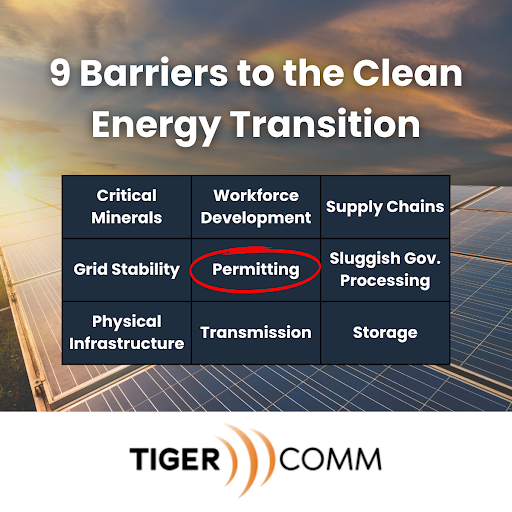2 min read
New Option For Renewable Energy Developers Who Want to Know What Locals Think
Mike Casey : Dec 21, 2023

Listen to the audio version
Among the nine big barriers to the clean energy transition, we think permitting is the one with the greatest potential as a transition killer.
Public opinion plays a crucial role in securing permits for clean energy projects. Without the support of locals, few county commissioners will support clean energy projects, despite the benefits they bring of economic activity, tax revenue and job creation. Community resistance, what we’ll call “NIMBYism,” (“not in my backyard”) risks projects and can prove incredibly costly. And, NIMBYism is a growing challenge. One Columbia Law School report found that at least 228 local laws, ordinances and policies have been passed across 35 U.S. states to restrict wind and solar farms.
Our firm, Tigercomm, has worked with the industry to understand how to better engage local residents. Last year, we underwrote the first-ever poll of rural Americans' views on renewable energy with public opinion research firm Embold Research. It found rural Americans are currently skeptical of clean energy, with roughly 63 percent believing that if their community hosts a wind or solar farm, the benefits will flow elsewhere.
Yet, support for renewable energy outweighs opposition. The key, we found, is to engage with these communities early to both preempt common concerns and foster confidence in the substantial benefits clean energy can bring.
However, many developers need to quickly understand the current attitudes of a specific community. To secure approval of a permit, it's crucial to meet residents where they are in terms of their opinions and views of a proposed project. Understanding community sentiment beforehand helps identify sites with fewer permitting barriers, making project success easier. But to gain that understanding, the options have been few: The traditional approach is to assemble a sense of community sentiment from the collective sense of developers via their conversations with local residents. Then there’s conducting a full-blown poll. But between those two ends of the spectrum, there have been no other affordable options.
That is, until now.
Filling the Gap: Transect’s AI-Based Sentiment Tool
Machine learning and AI have become a trend across the economy, and clean energy is no exception. AI is now projected to grow annually by 38 percent from 2023 to 2030. It’s estimated to create more than 130 million jobs and contribute $15 trillion to the global economy within that same time span.
Transect has moved to ensure clean energy development is part of the AI revolution. The company’s AI-based community sentiment tool, Solar Pulse, is a potential game-changer for the industry. Leveraging “Natural Language Processing” (NLP), Solar Pulse allows computers to interpret human language on social media, news articles and online forums. The sentiment analysis algorithm can categorize language as positive, neutral or negative based on specific keywords or phrases used in conjunction with solar energy. This provides developers with knowledge of a community’s sentiment toward renewable energy at a much lower price point than polling.
This tool can also track changes in public opinion over time and alert developers of important shifts, enabling them to actively adjust their community engagement efforts in real-time. This can help developers with green field projects determine how likely a community will be to resist their project.
Solar Pulse won’t replace polling, but it gives developers a faster, less-expensive tool to quickly take the pulse of a community. In our polarized age, that ability could prove priceless.
